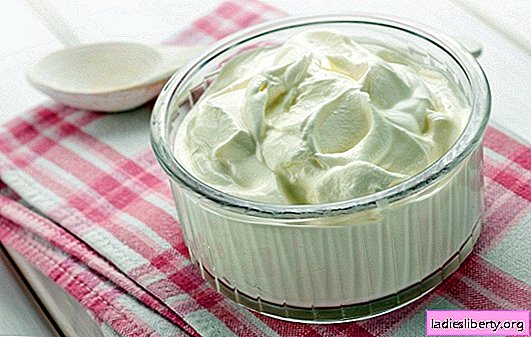
It is really very simple to make an envelope for discharge with your own hands, even if the size of its future owner is not yet known.
When modeling the future envelope, many factors are taken into account.
Firstly, the gender of the child is of great importance.
From this condition, preference is given to one or another color of the product.
Secondly, the time of the year of birth of the baby matters. Winter and summer envelope options vary greatly in the materials used.
For demi-season use, an envelope between winter and summer is selected strictly according to the weather: a warm backing material can always be removed and put back.
However, craftswomen can make an envelope for each season separately.
Thirdly, the transformation of the envelope is important when it is urgently required to quickly open the child.
Summer envelope
In the summer warm time, you can be discharged from the maternity hospital without an envelope. It is enough to put the newborn in warm clothes and wrap them in a light blanket. However, there is one reason why you can still change your mind and use the envelope - this is the festivity of the event. It is advisable to surround the moment of birth of a new life and the first days of a child with special care and love. Let the day of discharge of their hospital will be solemn and remembered for many years.

Envelopes for babies are different. It takes into account the gender of the child, height and weight. The interior of the envelope is sewn from natural fabric so as not to accidentally cause an allergy in the baby or overheating in the hot summer air. Exterior finish can be made of calico, thin fleece, flannel. The shapes are also diverse: rectangular, triangular, transformers, hourglass. It’s more practical to use one that you can then lay in a stroller. For these purposes, an elastic band is sewn into the envelope in the area of the baby’s belt, and the area of the legs is expanded so that the child can move his legs freely.
To make an envelope for discharge with your own hands you will need the following materials: pattern, natural cotton fabric, fabric for exterior decoration, synthetic winterizer under the head lace for decoration, ribbon for dressing across, scissors, matching threads, needle, tailor's meter.
Sewing order:
1. A pattern is required to make a standard-sized envelope

2. The pattern is transferred to paper and details are cut out;
3. Two details of the fabric are cut for external decoration in sizes 55/35 and 75/50 cm .;
4. For interior decoration, a part of 150/35 cm is cut out .;
5. 2 parts are made for the “hood”: one for exterior decoration, and the second - from natural. Both parts are sewn on a sewing machine. A thin layer of synthetic winterizer is necessarily sewn inside to give this area softness and airiness;
6. "Hood" is sewn to the main part of the product;
7. The "folding part" of fabric is sewn from below to the main product;
8. Finally, from the wrong side, both parts: internal and external, are joined together by means of a sewing machine. Edges are overlocked;
9. Next, the envelope is decorated with lace and tied with a ribbon. For tape, you can make a textile fastener to attach it securely to the envelope and not lose.
The child does not fit naked in the envelope. He is dressed in a diaper or panties, then in a body or vest, and a light cap is put on his head.

Winter envelope
An envelope for discharge from the hospital in the winter must be insulated. It should retain heat inside and not be blown through by a cold wind. He also must protect the baby from adverse weather conditions and, if necessary, open in a wide plaid. In the pattern described below, in contrast to the above-described summer version, there is lightning on the sides to better maintain the optimum temperature.

To make an envelope for discharge with your own hands you will need the following materials: pattern, cloak fabric 100/150 cm, synthetic winterizer for insulation, fleece or velsoft, zipper 60 cm long. 2 pieces.
Sewing order:
1. The pattern is built according to the following sizes:

2. Three identical parts from raincoat fabric, synthetic winterizer and velsoft are cut according to the pattern, taking into account allowances (1-1.5 cm.)

3. Cloak fabric is sewn with synthetic winterizer;
4. On both sides, one zipper is sewn first, and then another. Cloak fabric with synthetic winterizer are folded into the product

5. The turn has come for velsoft. It is sewn from the wrong side to the main product. After that, through an unstitched strip in the hood area, the envelope will need to be turned out on the front side;
6. The product is turned on the front side and the hood is sewn into a triangular shape;
That's all, the winter envelope is ready.

A few words about other envelopes
From the moment that a huge number of various fabrics began to appear on the Russian market, many types of envelopes for babies for discharge from the hospital appeared.

Knitted envelopes are very successful. However, for the manufacture of such a wonderful product, the master must have high skill. A knitted kit can be used in the winter, if it is reasonably well insulated inside with a non-blown fabric and fleece. Everybody has a well-knit product, except for one - delicate washing at low temperature is required. Because of this, you will have to devote extra time to removing some stubborn dirt that cannot be removed when washing in low temperature conditions. Washing in high temperature water will hopelessly ruin the thing forever, unfortunately.
Especially popular are quickly gaining fur envelopes. This option with a touch of grace and taste. There is no doubt that inside such a product the baby is always comfortable and warm in the winter. You can go for a short walk even in the cold. However, the operation of natural fur is necessarily taken into account. If it was snowing outside and the house’s fur became wet from melted snowflakes, it must be dried, but it is forbidden to dry on a battery. And you can’t wash it in a washing machine - only chemical treatment. And in winter you need to store in a cool place. A refrigerator is best. And this is not a joke. But there is no doubt that such a fur envelope, if sewn as a gift, will become a favorite gift from the baby’s parents and, perhaps, him too.












